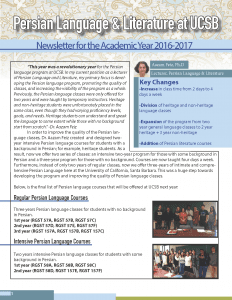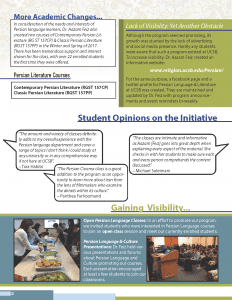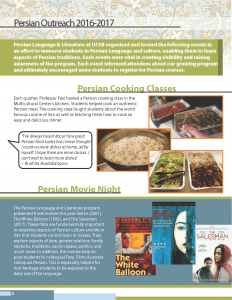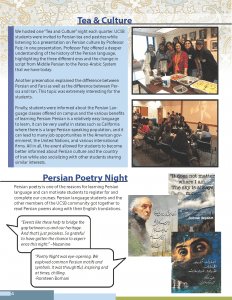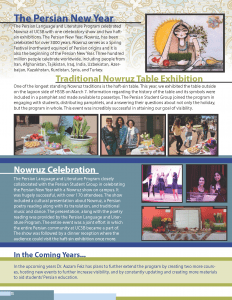Barbara Holdrege
About:
I am a comparative historian of religions specializing in South Asian and Jewish traditions. My research and teaching interests focus on historical and textual studies of Hindu traditions and Jewish traditions and also engage broader theoretical issues arising out of critical interrogation of analytical categories such as the body, space, scripture, and ritual.
Politics of Comparison. My work as a comparative historian of religions has emphasized the role of comparative study—and in particular the comparative study of “Hinduisms” and “Judaisms”—as a method of critical interrogation that can serve as a means to dismantle the tyranny of dominant paradigms in the academy. Long after the period of decolonization, the “postcolonial predicament” of scholars in the human sciences has involved coming to terms with the legacy of European epistemological hegemony, which still prevails as an “internal Eurocentrism” and “internal orientalism” that operate in the representational strategies, categories, and practices of many scholars. In my ongoing work I interrogate how certain analytical categories in the study of religion—such as language, scripture, the body, sacrifice, purity, and food—can be fruitfully reimagined through sustained comparative historical studies of their Hindu and Jewish instantiations, and I argue that this re-visioning of analytical categories can provide the basis for generating a range of alternative imaginaries to the prevailing Protestant Christian paradigms that have served to perpetuate the ideals of Enlightenment discourse and colonial and neocolonial projects. My earlier work focused on constructions of language and scripture in Hindu and Jewish traditions, as explored in my book Veda and Torah: Transcending the Textuality of Scripture. My forthcoming book, Hindus, Jews, and the Politics of Comparison: Embodied Communities and Models of Religious Tradition, provides an extended series of reflections on the politics of comparison.
Hindu Discourses of the Body. In the past decades there has been an explosion of interest in the body as an analytical category in the social sciences and humanities, particularly within the context of cultural studies. While scholarship on the body in religion has made significant advances in recent years, the dominant trends of analysis are problematic in that many scholars of religion have tended to simply adopt the categories of the body that have been theorized by scholars in philosophy, history, the social sciences, and feminist and gender studies. Using such Western theoretical models as the default cultural template against which to compare and evaluate categories of embodiment from “the Rest of the World” serves to perpetuate the legacy of European epistemological hegemony in the academy. In order to establish theory parity as part of the post-colonial turn, we also need to consider the potential contributions of other cultures to theories of embodiment, and it is therefore important for scholars of religion to excavate the resources of particular religious traditions and to generate analytical categories and models of the body that are grounded in the distinctive idioms of these traditions. Hindu traditions provide extensive, elaborate, and multiform discourses of the body, and a sustained investigation of these discourses can contribute in significant ways to scholarship on the body in the history of religions as well as in the human sciences generally. My publications in this area include my book Bhakti and Embodiment: Fashioning Divine Bodies and Devotional Bodies in Kṛṣṇa Bhakti and my co-edited volume Refiguring the Body: Embodiment in South Asian Religions. In addition, I edited a special issue of the International Journal of Hindu Studies on Refiguring Bodies That Matter: Sex, Gender, and Alternative Bodily Identities in Hindu Traditions, and I am currently completing a fourth volume, The Body and the Self: Hindu Contributions to Theories of Embodiment.
Bhakti Traditions. My book Bhakti and Embodiment explores the connections between bhakti (devotion) and embodiment and is concerned more specifically with constructions of divine bodies and devotional bodies in Kṛṣṇa bhakti traditions. In my explorations of bhakti and embodiment I discuss the historical shift from Vedic traditions to post-Vedic bhakti traditions, which is accompanied by a shift from abstract, translocal notions of divinity to particularized, localized notions of divinity and a corresponding shift from aniconic to iconic traditions and from temporary sacrificial arenas to established temple sites. I argue that the various transformations that characterize this historical shift can best be understood in terms of newly emerging discourses of the body in bhakti traditions in which constructions of divine embodiment proliferate, celebrating the notion that a deity, while remaining translocal in his or her essential nature, may appear in manifold corporeal forms and assume various types of concentrated presence in different times and different localities on different planes of existence. I argue, moreover, that an exploration of the connections between bhakti and embodiment is not only critical to understanding the transformations that characterize the historical shift from Vedic traditions to post-Vedic bhakti traditions, but, more importantly, it is critical to understanding the myriad forms that bhakti has historically assumed up to the present time. I ground my general reflections on bhakti and embodiment in an analysis of two case studies: the Bhāgavata Purāṇa, one of the most important scriptures in the Vaiṣṇava bhakti canon, and the Gauḍīya Vaiṣṇava tradition, an important bhakti movement inspired by the Bengali leader Caitanya in the sixteenth century that invokes the canonical authority of the Bhāgavata Purāṇa as the basis for its own distinctive teachings. This study is the fruit of my ongoing investigations in three intersecting fields within Hindu studies—bhakti studies, Purāṇic studies, and Gauḍīya Vaiṣṇava studies—which have also found expression in a number of other publications.
Sacred Spaces and Cultural Landscapes in South Asia. I have been involved in an extended investigation of constructions of sacred space in South Asia. Sacred space, as a category of spatial perception and practice, is one of the principal means by which religious communities in South Asia have represented, experienced, and shaped their natural, social, and cultural landscapes. South Asian communities have used a variety of means to mark spaces as “sacred”: architectural structures such as temples and shrines; pilgrimage maps and other cartographic representations; ritual performances such as festivals, pilgrimages, and temple rituals; narratives such as mythological representations and eulogistic literature; and iconography and other forms of visual culture. In my earlier work as the Director of the Center for the Analysis of Sacred Space (CASS), I fostered a variety of research and instructional initiatives concerned with the analysis of sacred space and with expanding the applications of geographic information systems (GIS) and technologies beyond the earth sciences and the social sciences into the humanities by developing geospatial digital models for mapping cultural and historical data. As part of my extended study of sacred sites in South Asia, I completed a geospatial multimedia digital volume, From Geographic Place to Transcendent Space: Tracking Kṛṣṇa’s Footprints in Vraja-Maṇḍala, which explores the religiocultural spaces of the region of Vraja (Hindi, Braj) in North India that is celebrated as the dhāman (abode) of the deity Kṛṣṇa where he resided during his sojourn on earth.
Publications:
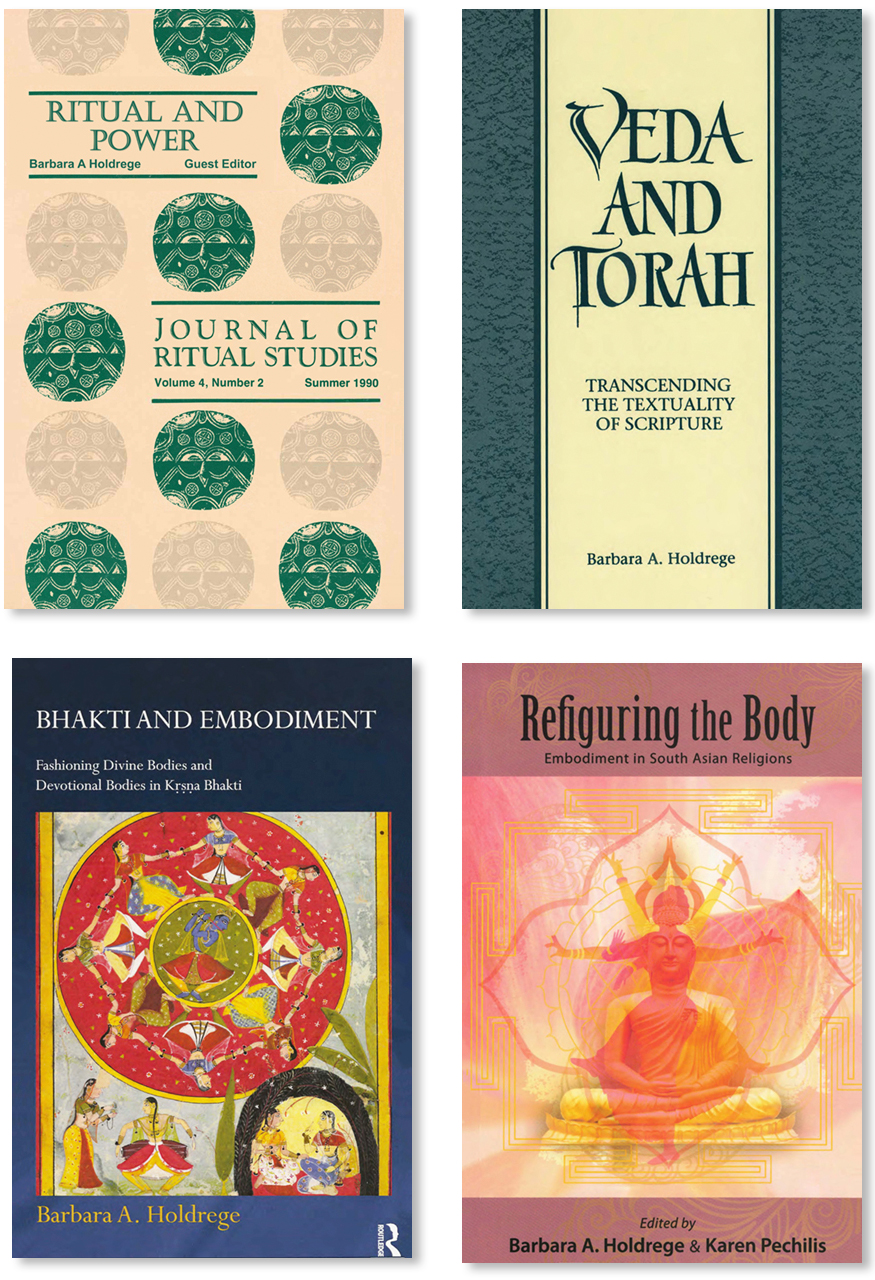
- The Body and the Self: Hindu Contributions to Theories of Embodiment (forthcoming).
- Hindus, Jews, and the Politics of Comparison: Embodied Communities and Models of Religious Tradition. Lanham, MD: Lexington Books, Rowman and Littlefield, expected 2024.
- Refiguring Bodies That Matter: Sex, Gender, and Alternative Bodily Identities in Hindu Traditions, special issue, International Journal of Hindu Studies, expected 2023. (Editor)
- Refiguring the Body: Embodiment in South Asian Religions. Albany: State University of New York Press, 2016. (Co-editor, with Karen Pechilis)
- Bhakti and Embodiment: Fashioning Divine Bodies and Devotional Bodies in Kṛṣṇa Bhakti. London and New York: Routledge Press, 2015.
- From Geographic Place to Transcendent Space: Tracking Kṛṣṇa’s Footprints in Vraja-Maṇḍala. (Geospatial multimedia digital volume)
- Veda and Torah: Transcending the Textuality of Scripture. Albany: State University of New York Press, 1996.
- Ritual and Power, special issue, Journal of Ritual Studies 4, no. 2 (Summer 1990). (Editor)
Articles:
- “Guru, Śāstra, Anubhava: The Triumvirate of Gauḍīya Vaiṣṇava Authority.” In Posthumous Editing of a Great Master’s Works, ed. Graham M. Schweig. Lanham, MD: Lexington Books (expected 2023).
- “Geographic Place as Transcendent Space: Gauḍīya Contributions to Reimagining Vraja-Dhāman.” In The Building of Vṛndāvana: Architecture, Theology, and Practice in an Early Modern Pilgrimage Town, ed. Kiyokazu Okita and Rembert Lutjeharms. Brill Indological Series. Leiden: Brill (expected 2023).
- “Direct Experience as the ‘Crest-Jewel of All Pramāṇas’: Realizing Kṛṣṇa through Meditation.” In The Worldwide Krishna Movement: Collected Essays on Half a Century of Growth, Impact, and Challenge, ed. Graham M. Schweig. New York and New Delhi: Oxford University Press (expected 2023).
- “Sex, Gender, and Devotional Desire: Refiguring Bodily Identities in Gauḍīya Vaiṣṇava Discourse.” In Refiguring Bodies That Matter: Sex, Gender, and Alternative Bodily Identities in Hindu Traditions, ed. Barbara A. Holdrege, special issue, International Journal of Hindu Studies (expected 2023).
- “Introduction: Refiguring Bodies That Matter.” In Refiguring Bodies That Matter: Sex, Gender, and Alternative Bodily Identities in Hindu Traditions, ed. Barbara A. Holdrege, special issue, International Journal of Hindu Studies (expected 2023).
- “Food Taxonomies, Dietary Regimes, and Sociocultural Hierarchies: The Gastrosemantics of Hindu and Jewish Foodways.” In Dietary Regulations, Food Transactions, and Social Boundaries in Hindu and Jewish Traditions, ed. Aaron Gross, special issue, Journal of Indo-Judaic Studies (expected 2023).
- “Interrogating Bhakti.” International Journal of Hindu Studies (expected 2023).
- “Transcendent Traces in a Pilgrimage Landscape: Rūpa Gosvāmin’s Re-visioning of Vraja.” Journal of Vaishnava Studies 30, no. 1 (Fall 2021): 151–184.
- “Vraja-Dhāman as a Meditation Maṇḍala: Perspectives from the Vṛndāvana Māhātmya.” Journal of Vaishnava Studies 27, no. 1 (Fall 2018): 69-95.
- “Hindu-Jewish Encounters—Whence, Whither, and Why? Theorizing Embodied Communities in the Academy and Beyond.” In Dharma and Halacha: Comparative Studies in Hindu-Jewish Philosophy and Religion, ed. Ithamar Theodor and Yudit Kornberg Greenberg, 211-245. Lanham, MD: Lexington Books, 2018.
- “The Dynamics of Sanskritising and Vernacularising Practices in the Social Life of the Bhāgavata Purāṇa.” In New Directions in Bhāgavata Purāṇa Studies, ed. Ravi M. Gupta and Kenneth R. Valpey, special issue, Journal of Hindu Studies 11, no. 1 (May 2018): 21-37.
- “Interrogating the Comparative Method: Whither, Why, and How?” In Methodical Aspects of Comparison, ed. Oliver Freiberger, special issue, Religions 9, no. 2 (February 2018): 1-15.
- “Beyond Avatāras: The Gauḍīya Vaiṣṇava Taxonomy of Kṛṣṇa’s Divine Forms.” Journal of Vaishnava Studies 26, no. 1 (Fall 2017): 45-83.
- “The Countervailing Dynamics of Sanskritization Strategies and Vernacularizing Practices in Hindu Scriptural Traditions.” The Abeng: A Journal of Transdisciplinary Criticism 1, no. 1 (2017): 29-36.
- “Bhakti and Embodiment: Bodies of Devotion and Bodies of Bliss in Kṛṣṇa Bhakti.” In Refiguring the Body: Embodiment in South Asian Religions, ed. Barbara A. Holdrege and Karen Pechilis, 159-198. Albany: State University of New York Press, 2016.
- “Introduction: Body Matters in South Asia.” In Refiguring the Body: Embodiment in South Asian Religions, ed. Barbara A. Holdrege and Karen Pechilis, 1-13. Albany: State University of New York Press, 2016.
- Review article on Jewish Concepts of Scripture: A Comparative Introduction, ed. Benjamin D. Sommer. Review of Biblical Literature 2014: 9-18.
- “Meditation as Devotional Practice in Jīva Gosvāmin’s Philosophy of Education.” ISKCON Studies Journal 2 (2014): 45-70.
- “The Gauḍīya Discourse of Embodiment: Re-visioning Jñāna and Yoga in the Embodied Aesthetics of Kṛṣṇa Bhakti.” In Bhakti in Hindu Cultures, special issue, Journal of Hindu Studies 6, no. 2 (August 2013): 154-197.
- “Hindu-Jewish Encounters.” In The Wiley-Blackwell Companion to Inter-Religious Dialogue, ed. Catherine Cornille, 410-437. Oxford: Wiley-Blackwell, 2013.
- “The Gauḍīya Challenge to Advaita Vedānta and Classical Yoga: Re-figuring Models of Embodiment and Personhood.” In Classical and Contemporary Issues in Indian Studies: Essays in Honour of Trichur S. Rukmani, ed. P. Pratap Kumar and Jonathan Duquette, 155-175. New Delhi: D. K. Printworld, 2013.
- “Vraja-Dhāman: Krishna Embodied in Geographic Place and Transcendent Space.” In The Bhāgavata Purāṇa: Sacred Text and Living Tradition, ed. Ravi M. Gupta and Kenneth R. Valpey, 91-116. New York: Columbia University Press, 2013.
- “Torah.” Encyclopedia of Global Religion, ed. Mark Juergensmeyer and Wade Clark Roof, vol. 2, 1294-1297. Los Angeles: SAGE Publications, 2012.
- “Veda.” Encyclopedia of Global Religion, ed. Mark Juergensmeyer and Wade Clark Roof, vol. 2, 1344-1347. Los Angeles: SAGE Publications, 2012.
- “Scripture.” Encyclopedia of Global Religion, ed. Mark Juergensmeyer and Wade Clark Roof, vol. 2, 1136-1141. Los Angeles: SAGE Publications, 2012.
- “The Politics of Comparison: Connecting Cultures Outside of and in Spite of the West.” International Journal of Hindu Studies 14, nos. 2-3 (December 2010): 147-175.
- “From Nāma-Avatāra to Nāma-Saṃkīrtana: Gauḍīya Perspectives on the Name.” Journal of Vaishnava Studies 17, no. 2 (Spring 2009): 3-36.
- “Body in Hinduism.” Encyclopedia of Love in World Religions, ed. Yudit Kornberg Greenberg, vol. 1, 93-96. Santa Barbara: ABC-CLIO, 2008.
- “Rasa.” Encyclopedia of Love in World Religions, ed. Yudit Kornberg Greenberg, vol. 2, 501-503. Santa Barbara: ABC-CLIO, 2008.
- “Krishna.” Encyclopedia of Love in World Religions, ed. Yudit Kornberg Greenberg, vol. 2, 352-356. Santa Barbara: ABC-CLIO, 2008.
- “Body.” In Studying Hinduism: Key Concepts and Methods, ed. Sushil Mittal and Gene Thursby, 19-40. New York: Routledge, 2008.
- “The Embodied Aesthetics of Mystical Realization: Enraptured Devotion and Bodies of Bliss in Kṛṣṇa Bhakti.” In Essays on Mysticism and Phenomenology, ed. Jeffrey Keiser and Michelle Rebidoux, special issue, ARC: The Journal of the Faculty of Religious Studies, McGill University 35 (2007): 55-92.
- “Beyond Hegemony: Hinduisms, Judaisms, and the Politics of Comparison.” In Indo-Judaic Studies in the Twenty-First Century: A View from the Margin, ed. Nathan Katz, Ranabir Chakravarti, Braj M. Sinha, and Shalva Weil, 77-92. New York: Palgrave Macmillan, 2007.
- “From Purāṇa-Veda to Kārṣṇa-Veda: The Bhāgavata Purāṇa as Consummate Smṛti and Śruti Incarnate.” Journal of Vaishnava Studies 15, no. 1 (Fall 2006): 31-70.
- “Dharma.” In The Hindu World, ed. Sushil Mittal and Gene Thursby, 213-248. New York: Routledge, 2004.
- “From the Religious Marketplace to the Academy: Negotiating the Politics of Identity.” Journal of Vaishnava Studies 11, no. 2 (March 2003): 113-142.
- “Beyond the Guild: Liberating Biblical Studies.” In African Americans and the Bible: Sacred Texts and Social Textures, ed. Vincent L. Wimbush, 138-159. New York: Continuum International, 2000.
- “Mystical Cognition and Canonical Authority: The Devotional Mysticism of the Bhāgavata Purāṇa.” In Mysticism and Sacred Scripture, ed. Steven T. Katz, 184-209. New York: Oxford University Press, 2000.
- “Enlightenment.” Contemporary American Religion, ed. Wade Clark Roof, vol. 1, 221-223. New York: Macmillan, 2000.
- “What’s Beyond the Post? Comparative Analysis as Critical Method.” In A Magic Still Dwells: Comparative Religion in the Postmodern Age, ed. Kimberley C. Patton and Benjamin C. Ray, 77-91. Berkeley: University of California Press, 2000.
- “Sacred Literature.” Encyclopedia of Women and World Religion, ed. Serinity Young, vol. 2, 855-859. New York: Macmillan, 1999.
- “What Have Brahmins to Do with Rabbis? Embodied Communities and Paradigms of Religious Tradition.” In Judaism and Asian Religions, ed. Harold Kasimow, special issue, Shofar: An Interdisciplinary Journal of Jewish Studies 17, no. 3 (Spring 1999): 23-50.
- “Body Connections: Hindu Discourses of the Body and the Study of Religion.” In The Study of Hinduism and the Study of Religion, special issue, International Journal of Hindu Studies 2, no. 3 (December 1998): 341-386.
- “Meaningless Ritual, Agonistic Sacrifice, or Ritual Taxonomy? Contending Perspectives in Vedic Studies.” Critical Review of Books in Religion 1997 (1998): 59-92.
- “Comparative Religion with a Difference.” In The Notion of “Religion” in Comparative Research: Selected Proceedings of the XVIth Congress of the International Association for the History of Religions, Rome, 3rd-8th September, 1990, ed. Ugo Bianchi, 803-812. Storia delle Religioni, 8. Rome: “L’Erma” di Bretschneider, 1994.
- “Veda and Torah: The Word Embodied in Scripture.” In Between Jerusalem and Benares: Comparative Studies in Judaism and Hinduism, ed. Hananya Goodman, 103-179. Albany: State University of New York Press, 1994.
- “Veda in the Brāhmaṇas: Cosmogonic Paradigms and the Delimitation of Canon.” In Authority, Anxiety, and Canon: Essays in Vedic Interpretation, ed. Laurie L. Patton, 35-66. Albany: State University of New York Press, 1994.
- “Hindu Ethics.” In A Bibliographic Guide to the Comparative Study of Ethics, ed. John Carman and Mark Juergensmeyer, 12-69. Cambridge and New York: Cambridge University Press, 1991.
- “Introduction: Towards a Phenomenology of Power.” In Ritual and Power, ed. Barbara A. Holdrege, special issue, Journal of Ritual Studies 4, no. 2 (Summer 1990): 5-37.
- “The Bride of Israel: The Ontological Status of Scripture in the Rabbinic and Kabbalistic Traditions.” In Rethinking Scripture: Essays from a Comparative Perspective, ed. Miriam Levering, 180-261. Albany: State University of New York Press, 1989.
Courses Taught:
- RG ST 5. Introduction to Judaism, Christianity, and Islam
- RG ST 19. The Gods and Goddesses of India
- RG ST 131A. Palestinian Judaism from Ezra to Akiba
- RG ST 131J. Introduction to Rabbinic Literature
- RG ST 144. Scripture in Cross-Cultural Perspective
- RG ST 145. Patterns in Comparative Religion
- RG ST 158/158A. Hindu Myth and Image
- RG ST 158C. Consciousness and the Body in Hindu Traditions
- RG ST 165. Vedic Traditions of India
- RG ST 200B. Proseminar in the History and Theory of Religion: Analytical Categories in the Study of Religion
- RG ST 200C. Proseminar in the History and Theory of Religion: Phenomenology and History of Religions
- RG ST 206. Seminar in South Asian Religious Studies: Hindu Cosmogonies
- RG ST 206. Seminar in South Asian Religious Studies: Tantric Traditions
- RG ST 206B. Seminar on Vedic Traditions
- RG ST 206D. Seminar on Bhakti Traditions
- RG ST 206G. Seminar on South Asian Discourses of the Body
- RG ST 206J. Seminar on Contemporary Issues in South Asian Religions: Post-Colonial Studies
- RG ST 270. Seminar on Myth and Symbol
- RG ST 159G/207A. Religious Literature in Sanskrit (course content variable)
- RG ST 159G/207A. Religious Literature in Sanskrit: Hindu Cosmogonies
- RG ST 159H/207B. Religious Literature in Sanskrit: Vedic Literature
- RG ST 159J/207D. Religious Literature in Sanskrit: Purāṇas












